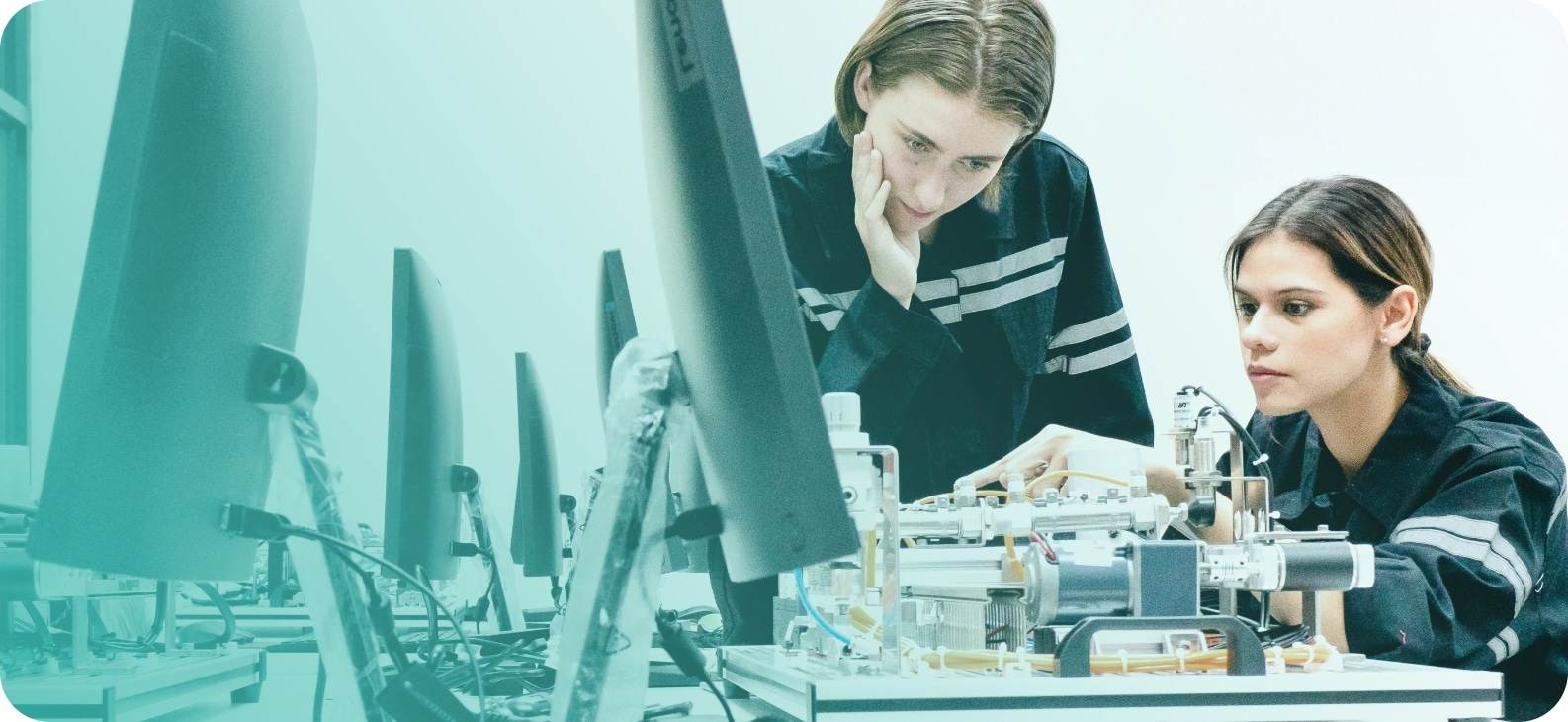
Les emplois
Rejoignez l’équipe de MED SENSORS dans le développement de dispositifs de santé actifs
Les emplois
Rejoignez l’équipe de MED SENSORS dans le développement de dispositifs de santé actifs
Stages
Stage 6 months, 1st semester 2024
Profil : physico-chimiste, titulaire d’un Master 1, ayant eu une première expérience en laboratoire. Expérience en impression appréciée. Maîtrise de l’anglais obligatoire.
Les capteurs de gaz, en particulier ceux dédiés aux composés organiques volatils (COV), font depuis lStaongtemps l’objet de recherches fondamentales et appliquées. Ces capteurs sont très sensibles et capables de détecter quelques dizaines de ppm d’une molécule organique. Cependant, ils sont peu sélectifs. Aujourd’hui, nous sommes capables de combiner ces capteurs avec une analyse de données par IA, ce qui permet l’analyse précise de mélanges de gaz. Le stagiaire aura en charge la fabrication, par impression, d’un réseau de capteurs conductimétriques, qu’il caractérisera par différentes méthodes spectroscopiques et électriques.
Stage 6 mois, (à partir de septembre 2024)
Profil : ARCHITECTE D’INTERIEUR (stage de fin d’étude). Il s’agit de nous aider à aménager une espace d’environ 400m² de laboratoire, bureaux et autres espaces de travail dans un open-space moderne et lumineux mais qui mérite un fort rafraichissement. Contact : pi**@*****is.fr »
Offres d’emploi
PhD 3 ans 2024-2027 (from September 2024)
Job offer – PhD preparation in Graphene Field Effect Transistor and Gas Sensing. Keywords : Electrolyte-gated transistors ; Graphene ; Gas sensor ; Food intolerance ; Printing techniques ; Medical device.
• Keywords
Electrolyte-gated transistors ; Graphene ; Gas sensor ; Food intolerance ; Printing techniques ; Medical device.
• Context
Breath analysis is a matured medical procedure. One of the tests normally undertaken is H2 detection for determining lactose intolerance and small intestinal bacterial overgrowth (SIBO). However, usage of H2 alone results in false negatives for up to 60%. A solution found to this issue is the simultaneous detection of H2 and CH4, today undertaken utilizing costly and complicated optical means. A few researchers have reported the use of field-effect transistors (FETs) for H2 detection, with MoS2, SiNW, or SnO2 NPs. For CH4, there are many reports on detection via electrochemical sensing e.g., on La0.87Sr0.13CrO3, ITO, Au or Pt. Concerning FETs, an extended-gate GFET functionalized with VO2 was reported. We think that better results can be obtained using an electrolyte gated GFET for which the control gate is a solid electrolyte on one side of the rGO channel and the sensing obtained by functionalizing the other side of the channel.
• Abstract of the Research Project
Small Intestinal Bacterial Overgrowth (SIBO) and other food intolerances of growing importance are detected in the office of MDs by using breath analysers, not necessarily costly but incomplete (2 gases cannot be sensed at the same time), and/or using mouthpieces containing sensors that must be reused, and/or with sensors far from the mouth, implying more air to be exhaled (not suitable for children or elderly patients). We propose a brand new 2-sided electrolyte gated graphene field effect transistor, functionalized with catalytic nanomaterials, fully obtained by printing on stickers, for detecting CH4 and H2 (along with humidity) in breath.
• Scientific Objectives
– To functionalize reduced graphene oxide with suitable metal (Pt, Pd, Au) and metal oxide semiconductor nanoparticles (vanadium oxide, tin dioxide, indium tin oxide) for methane and hydrogen detection in breath.
– To fabricate a brand new 2-side electrolyte-gated graphene-based field effect transistor (2-side EGGFET never described elsewhere) for gas sensing. – To set up a hydrogen+methane sensing measurement unit with breath analysis facility.
– To integrate it with a microcontroller for having portable and affordable healthcare monitor for bacterial growth in stomach.
• Candidate profile
Applicants for a PhD degree must have a master degree (or be in the process of obtaining one before the beginning of the project) in the field of Chemistry .
• Candidate competences and know-how:
– Physico-chemist
– Creative and skillful
– Experience in printing appreciated
– Experience in gas sensing appreciated
– No competences in French language are required.
• Expected starting date: 01-10-2024 at the latest
Assistant ingénieur chimiste CDD (Septembre 2024)
Ingénieur-e en élaboration de matériaux en couches minces. Conception et mise à disposition des briques technologiques clefs de l’impression par jet d’encre et par sérigraphie.
L’ingénieur.e d’études aura pour mission de gérer les différents équipements, les faire évoluer et réaliser les différentes prestations pour les utilisateurs non formées et les demandes externes. Dans le détail, les activités techniques concernent :
– la définition de protocoles d’élaboration de matériaux en couches minces et l’ajustement des paramètres
– l’optimisation et la formalisation des procédés dans le cadre de l’élaboration de nouveaux composants ou matériaux
– le développement et l’adaptation de tout ou partie d’appareillages spécifiques ;
– la réalisation de caractérisations in-situ et/ou ex-situ (physiques, chimiques, optiques, électriques, dimensionnelles, fonctionnelles) ;
– la détermination et le suivi de la réalisation d’un ensemble de mesures de caractérisation complexes, et valider les résultats ;
– la gestion des interventions de maintenance et les relations avec les fournisseurs ;
– la planification et le contrôle de l’utilisation des équipements ;
– l’application des règles d’hygiène et de sécurité ;
– l’exercice d’une veille technologique dans le domaine de l’impression et l’impression 3D ;
– la transmission des connaissances dans le cadre d’actions de formation et de publications. Contact : pi**@*****is.fr »



